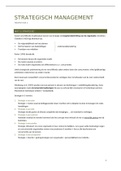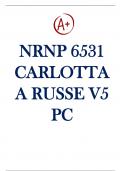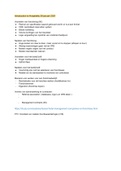Samenvatting
Summary first year course Psychopathology, lecture and book
- Instelling
- Tilburg University (UVT)
A detailed summary of the first year psychology course Psychopathology. This includes all lectures and chapters of the book Fundamentals of Abnormal Psychology by Comer and Comer (9th edition).
[Meer zien]








